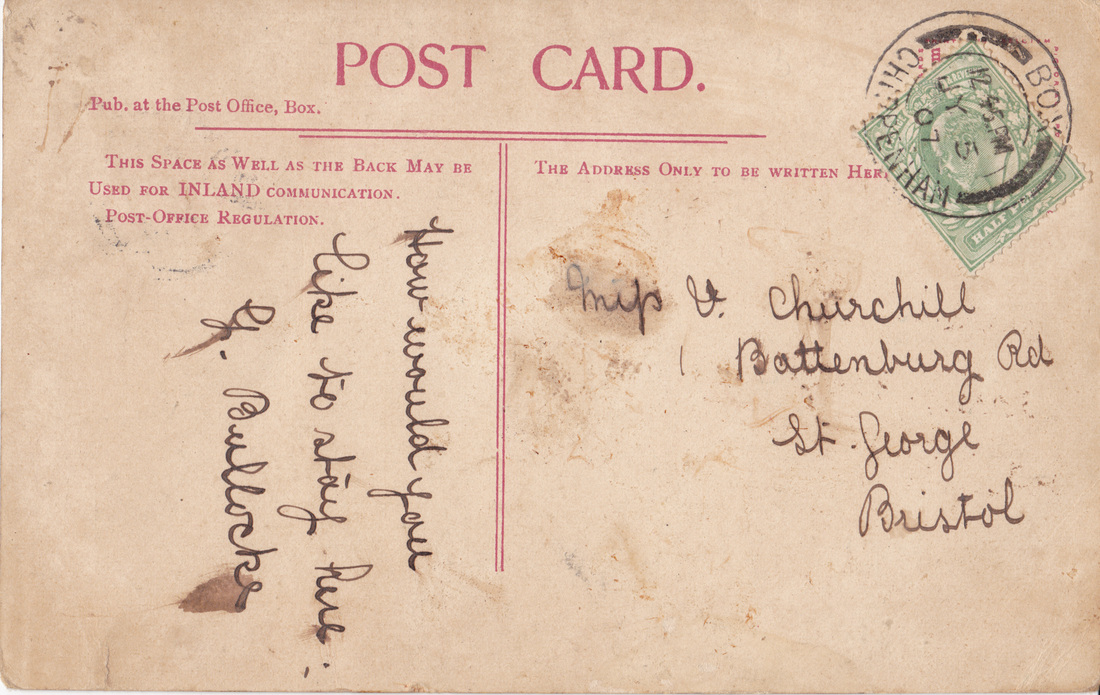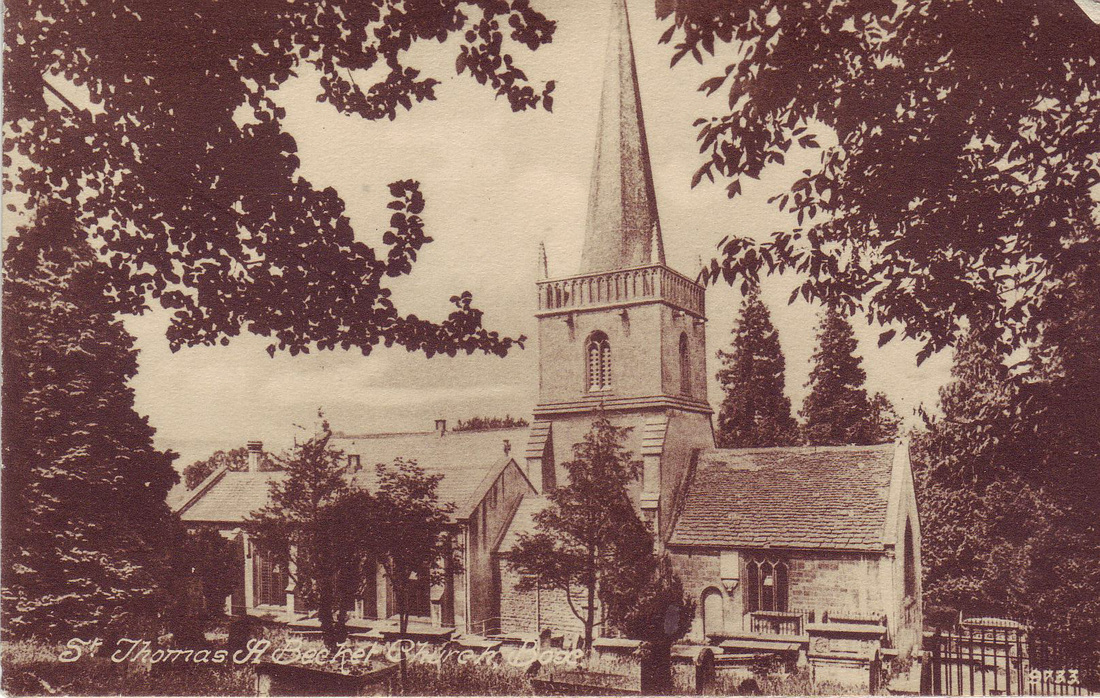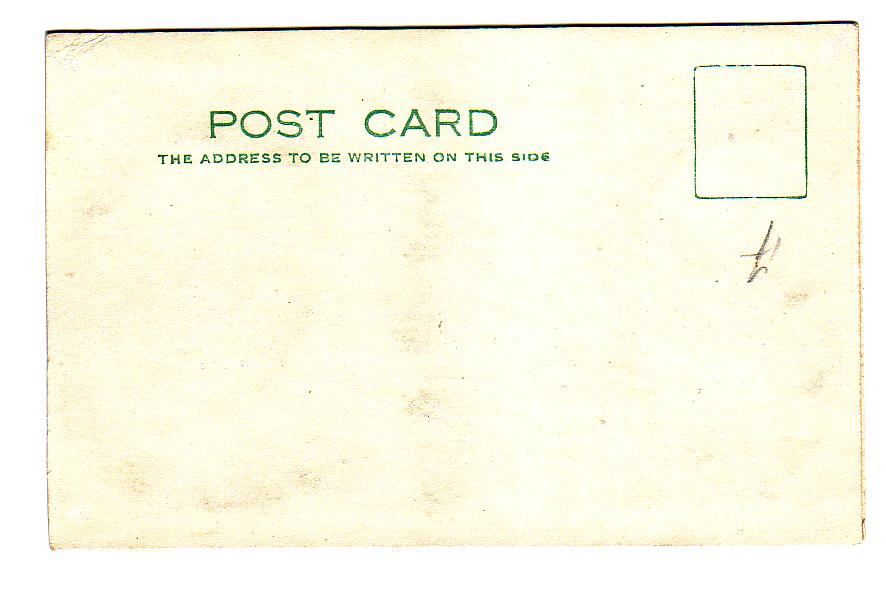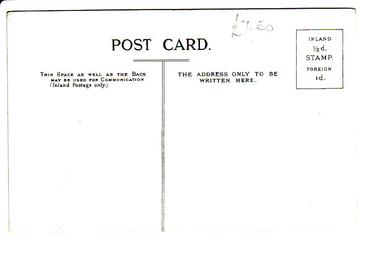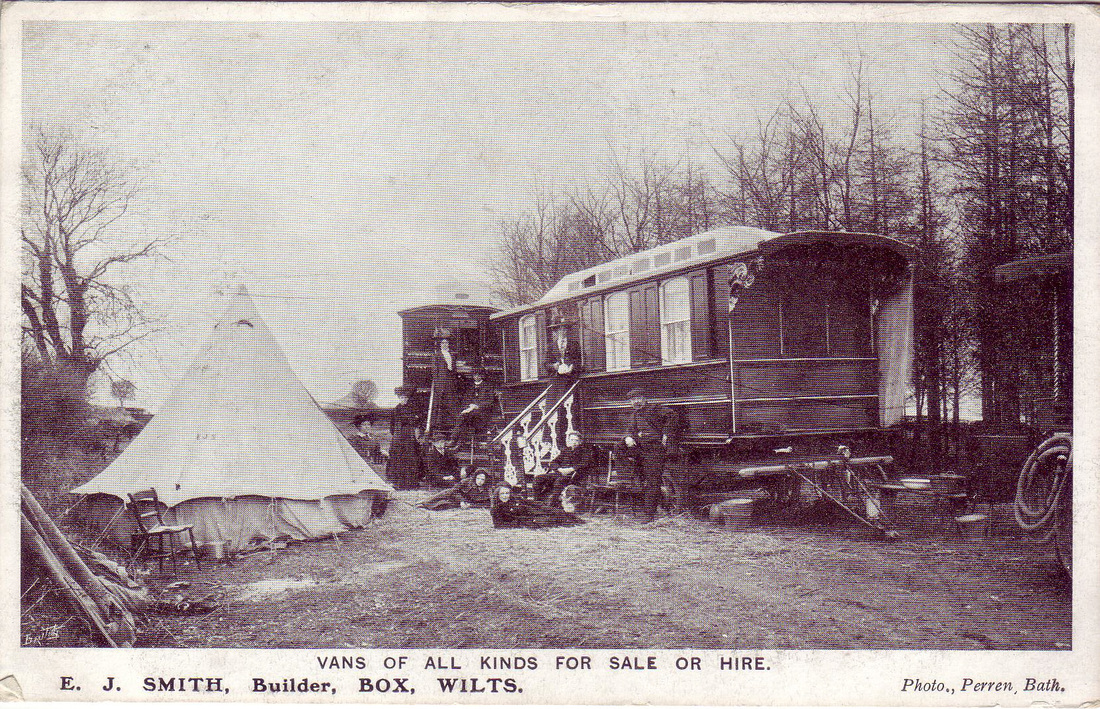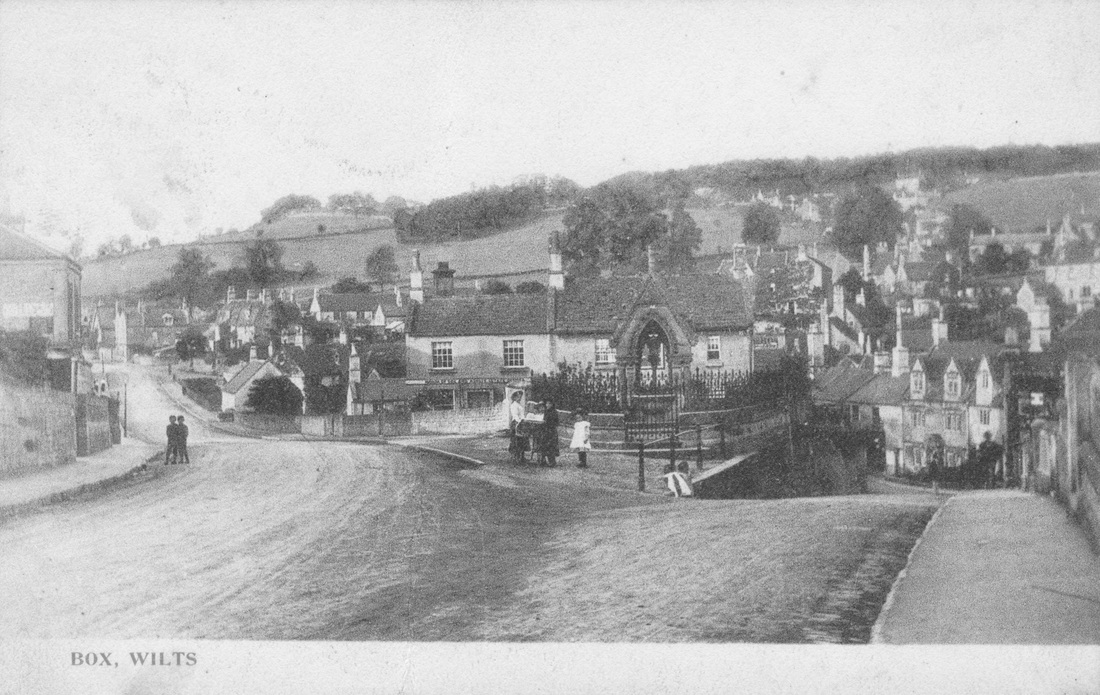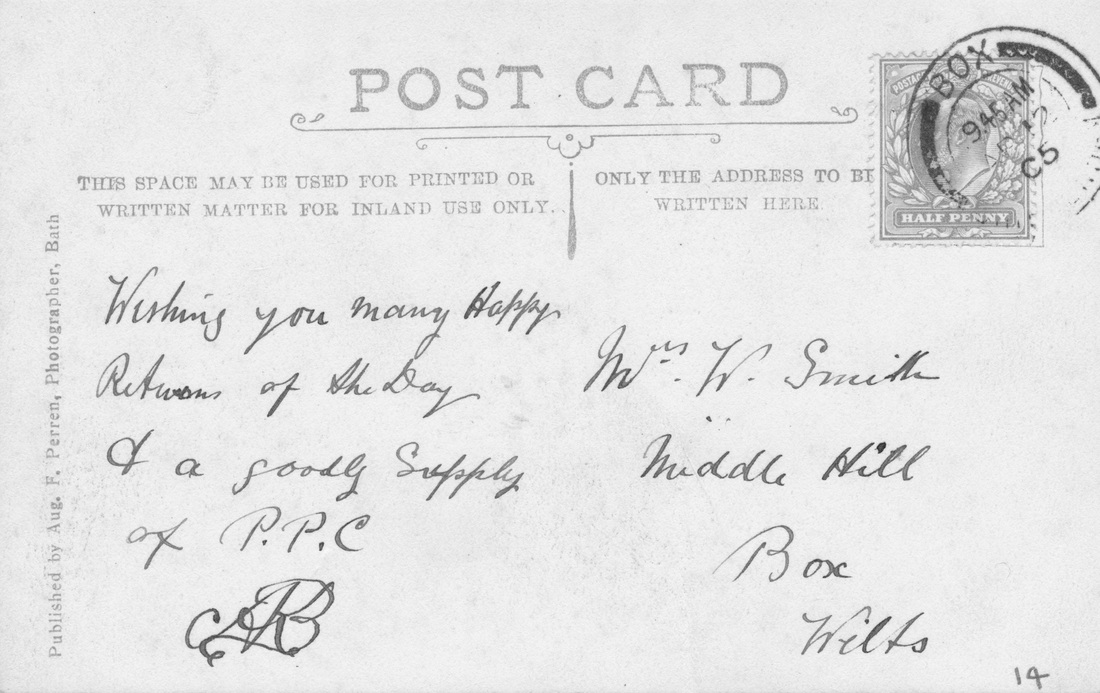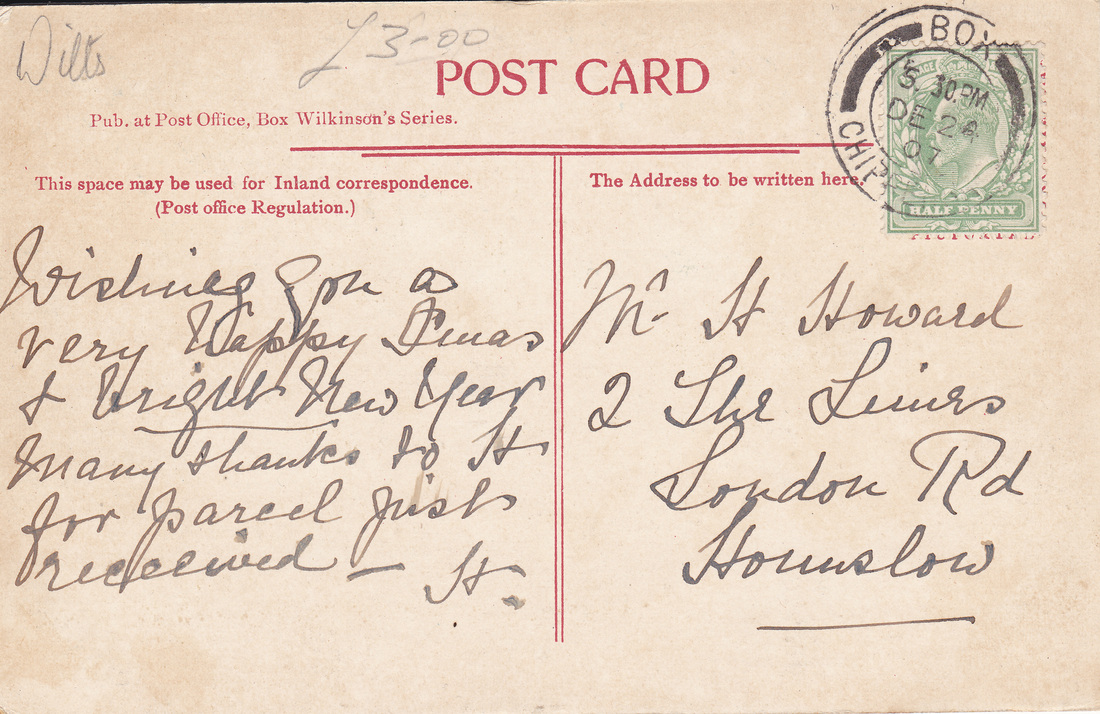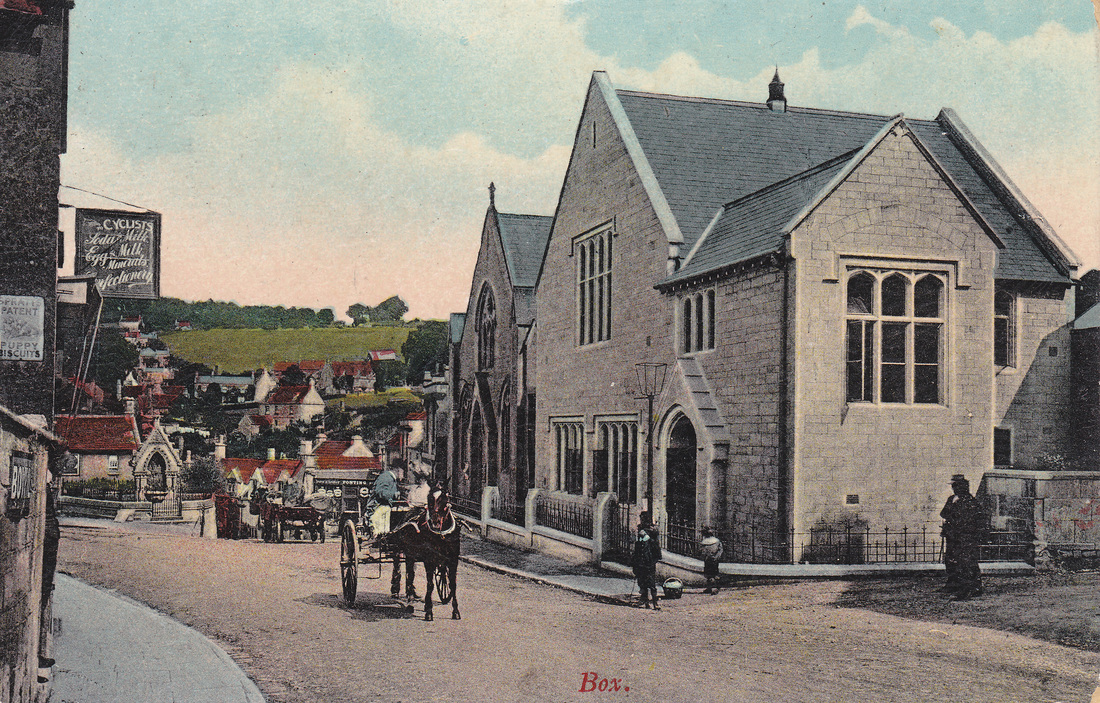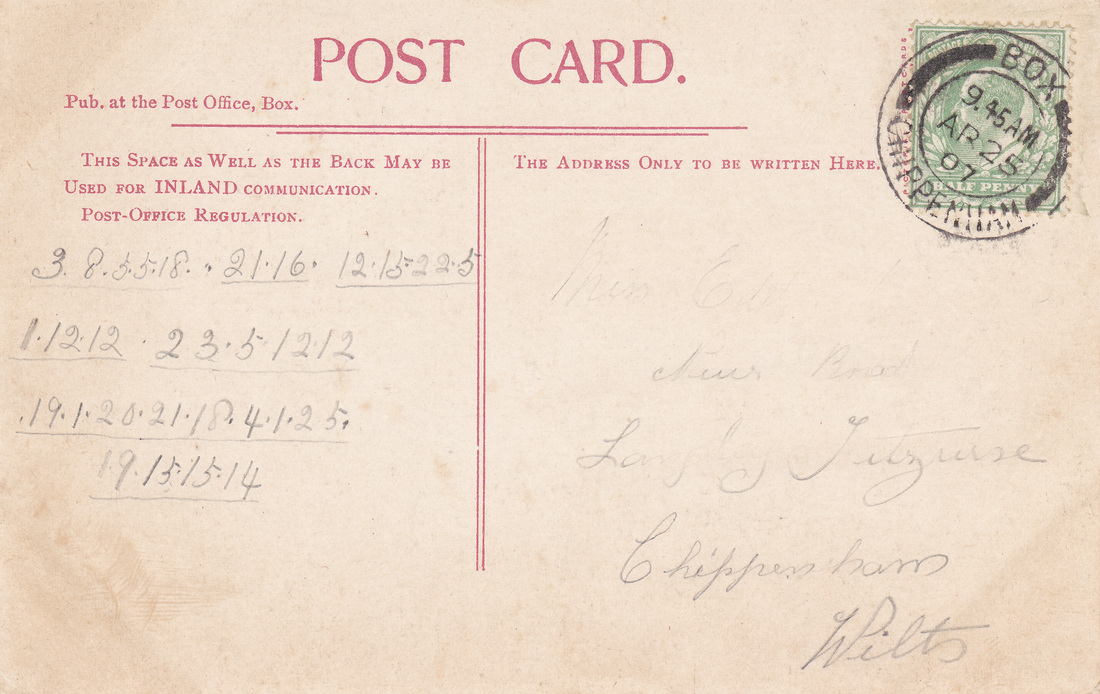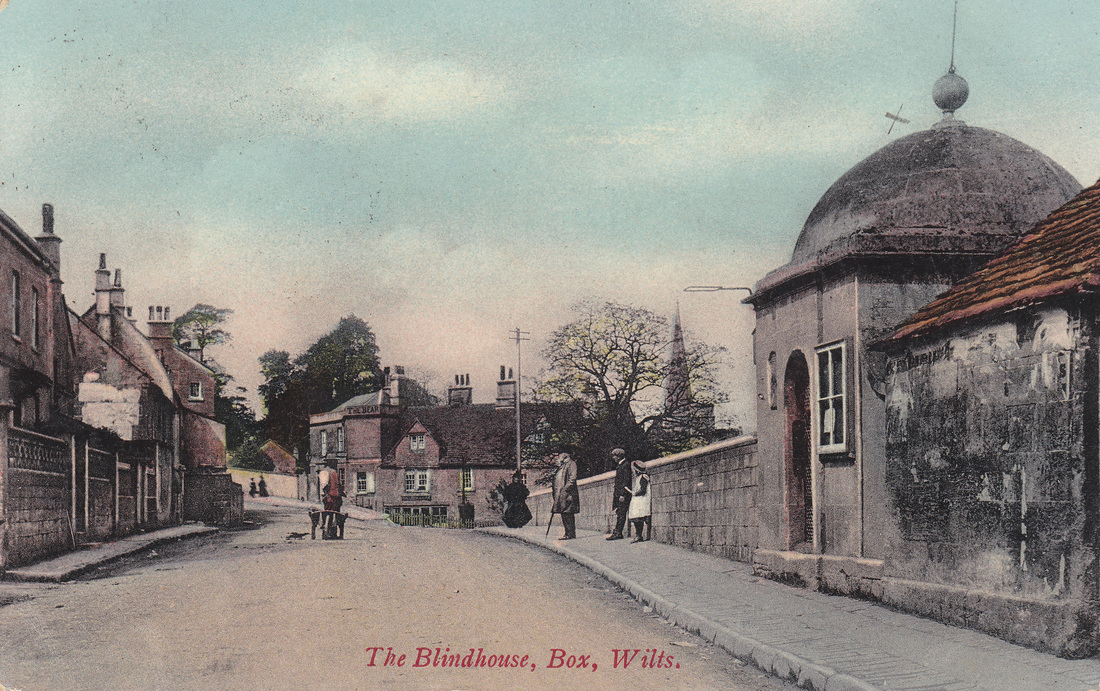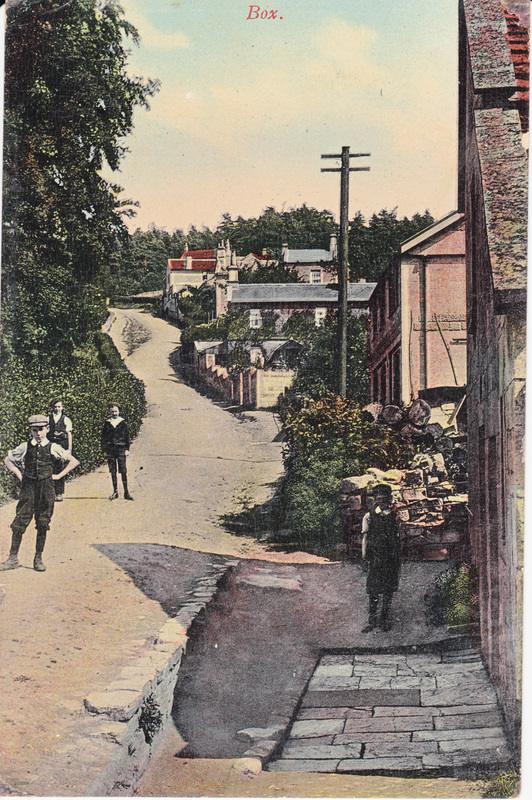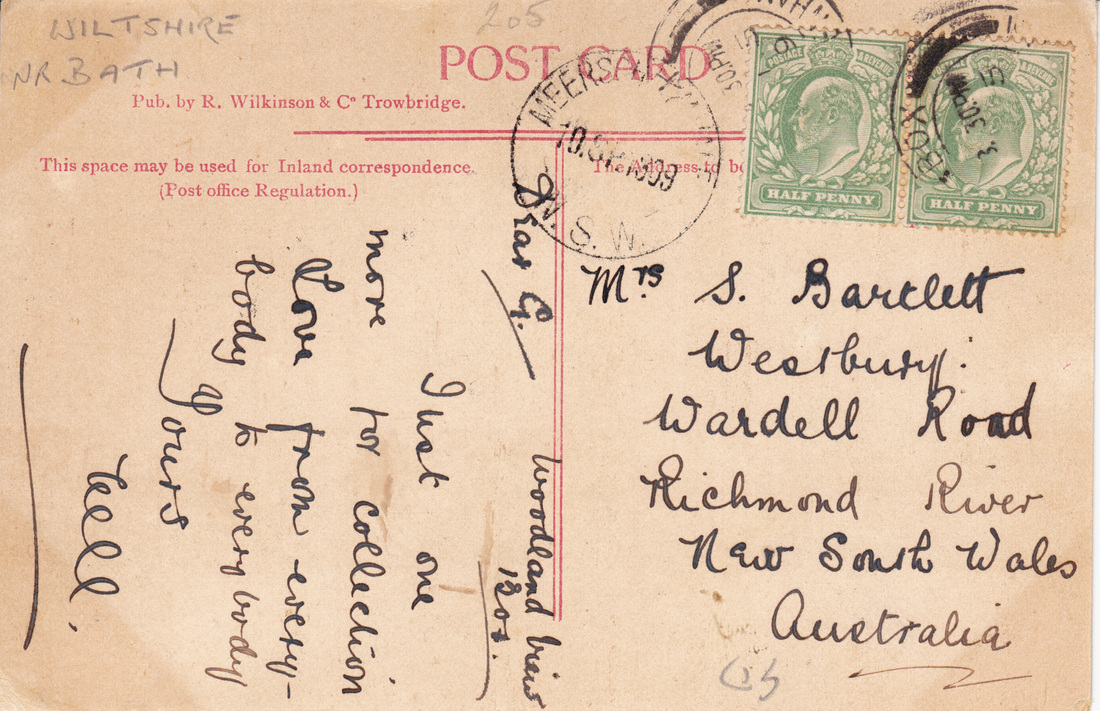Postcards 1870-1918 Postcards courtesy Rose Ledbury January 2015
This appears to be an ordinary postcard dated1907. But it has a hidden code attached which you can learn how to crack later.
This appears to be an ordinary postcard dated1907. But it has a hidden code attached which you can learn how to crack later.
Many people collect postcards nowadays because they provide a
vision of the past captured in their image.[1]
But they are much more than just a record of the past. The history of the
humble postcard is as interesting as the story they show.
The golden age for cards was the period 1870-1918. At the time, it seemed to be an almost instant method of communication and a card sent in the morning would often arrive the same afternoon. Even in rural areas like Box there were several postal deliveries per day operated by a Post Office system which employed a quarter of a million people in Britain by 1914.
The reason for their popularity was straightforward enough: they were a cheap way to send quick and easy messages. The postage for cards in 1870 started as ½d each, compared to letters at 1d. Of course there were other reasons: increased literacy after the 1870 Education Act, greater travel and leisure but, above all, it was the picture on the front that invigorated their use.
The golden age for cards was the period 1870-1918. At the time, it seemed to be an almost instant method of communication and a card sent in the morning would often arrive the same afternoon. Even in rural areas like Box there were several postal deliveries per day operated by a Post Office system which employed a quarter of a million people in Britain by 1914.
The reason for their popularity was straightforward enough: they were a cheap way to send quick and easy messages. The postage for cards in 1870 started as ½d each, compared to letters at 1d. Of course there were other reasons: increased literacy after the 1870 Education Act, greater travel and leisure but, above all, it was the picture on the front that invigorated their use.
Early Postcards
When postcards were first introduced they were small, official documents with the recipient's address on one side and a message on the back, as in the early postcard below (courtesy Box Parish Council). Nothing else was allowed on the cards until Henneca Heaton, the great Post Office reformer, started the modern size of postcard in 1899.
In 1902 Frederick Hartman invented the line down the back of card where you could write both a message and an address, still today's format. It allowed a whole side to be covered by a picture which launched the whole postcard craze. The postcard below shows the split reverse and franking at ½d for UK (or 1d for foreign recipients).
When postcards were first introduced they were small, official documents with the recipient's address on one side and a message on the back, as in the early postcard below (courtesy Box Parish Council). Nothing else was allowed on the cards until Henneca Heaton, the great Post Office reformer, started the modern size of postcard in 1899.
In 1902 Frederick Hartman invented the line down the back of card where you could write both a message and an address, still today's format. It allowed a whole side to be covered by a picture which launched the whole postcard craze. The postcard below shows the split reverse and franking at ½d for UK (or 1d for foreign recipients).
Often the cards were just notes sent from one
side of Box to the other. The card below was posted in the central Box Post
Office in 1905 and sent to Middlehill. It was the equivalent of our modern birthday
card.
As photography improved and became cheaper commercial printers or even local shops started to produce private postcards, often using the pictures of other manufacturers but sometimes enhancing them by colour or over-printing. Box Post Office published many different cards.
Secret Codes
A new style of communication developed, similar in some respects to our modern texting language. It allowed secret communication (often endearments of love) with meaningful abbreviations, the use of Morse and other private codes.
A new style of communication developed, similar in some respects to our modern texting language. It allowed secret communication (often endearments of love) with meaningful abbreviations, the use of Morse and other private codes.
The secret nature of the communication extended even to the positioning of stamps put on at an angle to express lightness and frivolity, as in the postcard in the heading of this article.
By 1900 people started collecting postcards and sending them home whenever they went on holiday. Often they were simple street scenes, rather than the beautiful landscapes we prefer today. But the preference was, like now, for highly coloured pictures, often hand-coloured before colour photography.
By 1900 people started collecting postcards and sending them home whenever they went on holiday. Often they were simple street scenes, rather than the beautiful landscapes we prefer today. But the preference was, like now, for highly coloured pictures, often hand-coloured before colour photography.
|
Arguably the high point of the age of postcards was during the Great War, when families were split up by military service. Through cards, they could be in touch and send small messages to each other to confirm their thoughts were with family and friends.
After the war the sending of cards substantially reduced. The price of postage increased in 1918 to 1d and the number of daily deliveries reduced. |
The craze for collecting stopped because it was too associated with the war and, of course, the advent of the telephone became the modern method of communication. Nonetheless they leave us with a treasure of pictures from an era now gone.
Your Postcards Needed
If you have any old cards or photos of Box, we would love to hear from you, with a view to publishing them on the website for the pleasure of others and to ensure that Box's story is preserved. We guarantee no damage to your items and we can do the whole process as you watch.
Your Postcards Needed
If you have any old cards or photos of Box, we would love to hear from you, with a view to publishing them on the website for the pleasure of others and to ensure that Box's story is preserved. We guarantee no damage to your items and we can do the whole process as you watch.
References
[1] This article is indebted to Guy Atkins, History Today Podcast, 5 June 2013
[1] This article is indebted to Guy Atkins, History Today Podcast, 5 June 2013

